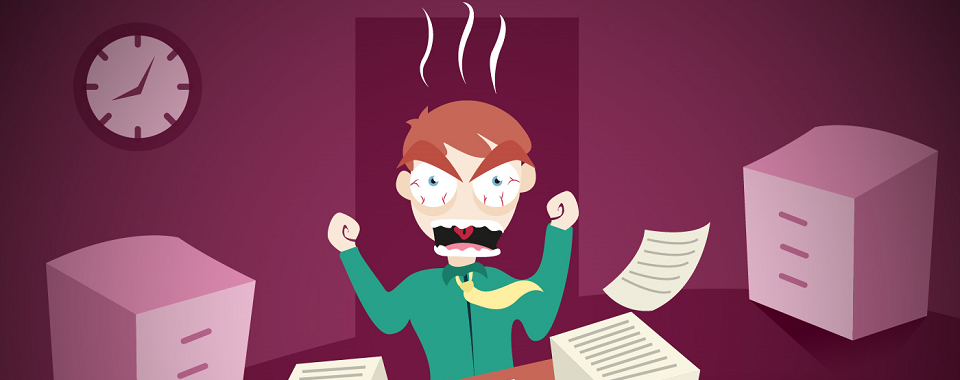The Quest for Workplace Optimism: Why We Must Change Our Relationship with Work
“For more than two centuries, we have absorbed, as a society and as individuals, some false ideas about our relationship with work,” proclaims Barry Schwartz. This is how Schwartz, speaker, author and Swarthmore College professor opens his book, Why We Work.
Society and many individuals have been snookered into believing the purpose of work is to be paid. It is, after all, the predominant driver for getting a job. Yes, we all have bills to pay, and experiences we want and “stuff” we need. However, the pursuit of more—money, experiences, material possessions—has led us to develop a work ethic that moves at a relentless pace. In the long run, this relationship with work is stressful and unsustainable.
The Pursuit of More
More than half of all employees check their work messages, emails and texts from home after hours or while on vacation. 54 percent of Americans report checking email when they’re home sick. In this pursuit of getting more done, the average full-time employee works 47-hours a week, an extra workday a week.
The telepressure to do more negatively impacts the health of employees. Telepressure, a term coined by Larissa Barber, PhD, professor of psychology from Northern Illinois University, is the overwhelming need to respond to a message when your device or computer notifies you.
[ctt template=”4″ link=”5T8hg” via=”no” ]The telepressure to do more negatively impacts the health of employees.[/ctt]
Professor Barber found that telepressure is a predictor of burnout, physically and cognitively. It also increases absenteeism at work and diminishes the quality of sleep we get. In other words, it
The pursuit of more in a business sets the tone culturally. “It’s how we get things done around here,” people say. Unfortunately, this belief reinforces the need to “fit in” and act as everyone else does. Even if the behavior is contrary to what an employee believes. This cognitive dissonance can lead to added stress.
Workplace Stress
Money and work are the top two sources of stress for people. Yet, too often stress is falsely assumed to be bad. It’s important to distinguish the two types of stress to understand their influence on people. The two types of stress are eustress and distress.
- Eustress is good stress. It’s what fuels your performance when your adrenaline is pumping. Imagine the stress you feel when gearing up to give a presentation. Eustress helps improve your performance.
- Conversely, distress causes extreme nervousness, for starters. For some, giving a presentation throws them over the edge from optimum stress levels to too much stress, or overload. Distress undermines employee performance. Managers and organizations aren’t paying enough attention to the impact pursuit of more has on their people.
The telepressure many of us feel today doesn’t help; it just doesn’t give employees time for work recovery (the downtime we need away from work). It’s a contributor to distress, which inevitable leads to feeling of burnout—the exact opposite of workplace optimism.
Maximizing Employee Performance
If we’re going to change the way we work, it begins with you, the manager. To understand a problem exists related to workload isn’t enough. We need more leaders willing to make a difference for their team, even if the macro-culture operates differently.
[ctt template=”4″ link=”waJfW” via=”no” ]If we’re going to change the way we work, it begins with you, the manager.[/ctt]
To maximize employee performance, you want to keep stress at optimum levels. Yes, this is different for each employee. So, it means knowing what stress load each person on your team can manage in a healthy manner. There will be times employees slide down the curve (shown below) into overload. A watchful leader knows when her employees are moving toward distress.
The bell curve is based on researchers Yerkes and Dodson’s work. The premise is simple. As your performance demands increase so, too, does your stress level. There comes a point, however, when your performance declines and you move into distress.
Revisiting our Relationship with Work: Taking Action
To help prevent eustress from becoming distress, we must revisit our relationship with work. Specifically, with how we work. Here are actions you can take today:
- Don’t email your team after 6pm (if you need to type emails, schedule them to go out at 8am the following day)
- Insist your employees take their vacation (this doesn’t mean only taking three day weekends; if the employee has the time, insist on five days)
- Monitor commitment fatigue (commitment fatigue is the fatigue employees feel from their commitment to the team and company’s purpose)
- Encourage physical exercise during the day (hold walking one-on-one meetings with employees, or start walking groups within the team and add a contest to see who gets the most steps)
- Align work with employees’ strengths (after all, when are assigned that uses our skills and energizes us, it keeps us in the optimum stress level zone)
At the organization level, nap pods, meditation classes, and incenting employees to take vacations are great solutions to encourage healthier ways to work.
The contract between employer and employee has contributed to the misaligned view of work. It is no longer an exchange of time for money. Because that’s only part of the new employment contract. Today, we also want to do meaningful work that aligns with a bigger purpose.
While these aspirational needs are important for today’s worker, we also need those workers to be healthy—mentally and physically. So we must help them change their relationship with work. After all, overworking employees undermines the organizations’, and the employees’, growth. Just as important; it also becomes a barrier to success in our quest for workplace optimism.



No Comments